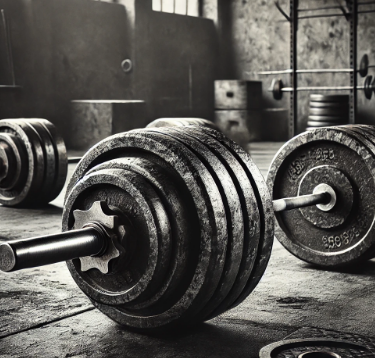How to Perform the Deadlift Correctly A Step by Step Guide
Published By GainzTracker, 27th September 2024

The deadlift is one of the most effective strength-training exercises, targeting multiple muscle groups, including the hamstrings, glutes, lower back, and core. Performing the deadlift with proper form is essential to avoid injuries and maximize the benefits of the exercise. In this guide, we'll walk you through the steps to execute the perfect deadlift.
Step 1: Set Up Your Stance
Begin by positioning your feet hip-width apart, with your toes slightly pointed outward. Stand close to the barbell, so it is over the mid-foot. Your shins should be almost touching the bar.
Step 2: Grip the Bar
Bend at the hips and knees to reach down and grip the bar with your hands just outside your knees. You can use an overhand grip, a mixed grip (one hand overhand, one underhand), or a hook grip, depending on what feels most comfortable.
Step 3: Engage Your Core and back
Before lifting, take a deep breath and engage your core by tightening your abdominal muscles. Pull your shoulder blades back and down to keep your upper back tight. Your spine should remain neutral, without rounding or excessive arching.
Step 4: Lift the Barbell
Push through your heels and extend your legs, lifting the barbell straight up. Keep the bar close to your body throughout the lift. As you stand up, your hips and shoulders should rise at the same time. Fully extend your hips and knees at the top of the movement, but avoid leaning back excessively.
Step 5: Lower the Barbell
To lower the barbell, push your hips back while maintaining a tight core and straight spine. Bend your knees once the bar passes them and continue lowering the weight to the floor in a controlled manner. Avoid dropping the bar or rounding your back.
Common Deadlift Mistakes to Avoid
- Rounding the back: This is one of the most common mistakes and can lead to serious injury. Keep your back straight and tight throughout the lift.
- Barbell too far from the body: If the bar is too far from your legs, it puts unnecessary strain on your lower back. Keep the bar close to your shins and thighs.
- Not engaging the core: Failing to engage your core can result in instability and poor lifting mechanics. Tighten your abs before each lift.
Benefits of Deadlifting
Incorporating deadlifts into your workout routine can have numerous benefits, including:
- Increased strength: The deadlift builds strength in the posterior chain, including the glutes, hamstrings, and lower back.
- Improved posture: A strong lower back and core help with overall posture and reduce the risk of injury during other exercises or daily activities.
- Functional movement: The deadlift mimics real-life movements like lifting objects from the ground, making it a highly functional exercise.
Final Thoughts
Mastering the deadlift takes time and practice, but it's worth the effort. Always focus on form, start with lighter weights, and gradually increase the load as your strength improves. Incorporate deadlifts into your routine for overall strength and functional fitness.
Disclaimer: The information provided in this article is for educational purposes only and is not intended as a substitute for professional medical advice, diagnosis, or treatment. Always consult with a healthcare provider before beginning any exercise program. Use caution when performing exercises to avoid injury.